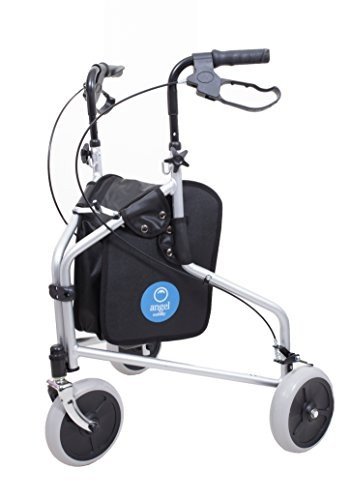A Comprehensive Guide to Buying a Mobility Scooter
Mobility scooters have actually become a crucial tool for lots of individuals aiming to boost their self-reliance and mobility. With a vast selection of models and functions offered, choosing the best mobility scooter can be intimidating. This post provides an informative guide to help customers navigate their options, examine their needs, and make an informed purchase.
Comprehending Mobility Scooters
Mobility scooters are electric vehicles created for people who experience mobility challenges. mobility scooter uk are especially beneficial for senior citizens, those with disabilities, or individuals recovering from injuries. Mobility scooters can differ commonly in terms of style, functions, and prices.
Kinds Of Mobility Scooters
Before starting a purchase, it's vital to understand the different kinds of mobility scooters readily available:
Three-Wheel Scooters:
- Generally more maneuverable in tight spaces
- Lightweight and portable
- Perfect for indoor use
Four-Wheel Scooters:
- Offer higher stability and balance
- Appropriate for outside usage over numerous terrains
- Normally have a longer battery life
Foldable/Portable Scooters:
- Designed to be easily carried and kept
- Can typically suit the trunk of a car
- Suitable for those who travel regularly
Sturdy Scooters:
- Built to accommodate bigger people
- Often come with more robust functions for outdoor usage
- Normally geared up with larger batteries for extended range
Factors to Consider When Buying a Mobility Scooter
1. Weight Capacity
Pick a mobility scooter that can support the user's weight. Most scooters have a weight limit varying from 250 to 500 pounds. It is crucial to make sure that the scooter can accommodate the user conveniently.
2. Range and Battery Life
The variety is how far the mobility scooter can take a trip on a single charge. Typical ranges vary between 10 to 30 miles. Consider the user's daily activities and choose a scooter with an appropriate variety.
3. Scooter Dimensions
Consider the size of the scooter, including its weight and dimensions. A more compact scooter might be ideal for narrow corridors and tight areas, while larger models provide additional stability and convenience.
4. Terrain Capability
Examine where the scooter will primarily be utilized. If the user plans to take a trip mostly on pavement, a lightweight model may be adequate. However, if the user needs to traverse gravel or irregular surfaces, think about a four-wheel scooter constructed for off-road use.
Leading Features to Look For
Comfort
- Adjustable Seats: Look for scooters with cushioned and height-adjustable seats to make sure convenience throughout travel.
- Armrests: These improve safety and support while navigating.
Safety and Visibility
- Headlights and Taillights: Essential for nighttime usage.
- Turn Signals and Reflectors: Improve visibility and security while on the road.
User-Friendly Controls
- Joystick or Drive Controls: These ought to be intuitive and easy to manipulate.
- Easy-to-Read Displays: A control panel that reveals battery life, speed, and range can improve the user experience.
Extra Features
- Storage Compartments: These provide included benefit for bring personal products while on the go.
- Weather condition Protection: Consider models with rain covers or windscreens if utilized in variable weather.
Expense Considerations
When budgeting for a mobility scooter, costs can range anywhere from ₤ 500 to over ₤ 5,000 depending on the design, features, and brand. Additional costs may consist of:
- Extended Warranty: Protects against flaws and can conserve money in the long run.
- Devices: Optional features, such as updated seats, lights, or storage solutions.
| Function | Expense Range |
|---|---|
| Standard Models | ₤ 500 - ₤ 1,500 |
| Mid-Range Models | ₤ 1,500 - ₤ 3,000 |
| High-End Models | ₤ 3,000 - ₤ 5,000 |
Financing Options
Lots of retailers provide financing strategies, and some city government efforts might supply grants or help for those in requirement. Examine possible monetary support with community resources or mobility service organizations.
FAQs about Buying a Mobility Scooter
What is the distinction in between a mobility scooter and a wheelchair?
Mobility scooters are motorized and enable users to navigate independently, while wheelchairs might require physical support or manual operation.
How do I preserve a mobility scooter?
Routine maintenance includes examining battery life, cleaning up the scooter, and examining tires and brakes. Always describe the user handbook for specific guidelines.
Can mobility scooters be utilized inside?
Yes, lots of models are developed for both indoor and outdoor usage. Nevertheless, three-wheel scooters tend to be better matched for indoor navigation due to their tighter turning radius.
Are mobility scooters covered by insurance coverage?
Some insurance coverage prepares cover a part of the expenses for mobility scooters if they are deemed medically essential. Contact your company for particular details.
How fast can a mobility scooter go?
A lot of mobility scooters have a maximum speed ranging from 4 to 8 mph. Nevertheless, the appropriate speed may differ depending upon regional policies.
Getting a mobility scooter can considerably boost one's independence and lifestyle. By understanding the types, features, and costs related to mobility scooters, prospective purchasers can make well-informed choices that suit their needs and preferences. Customization and extensive research are crucial to ensuring fulfillment with this important financial investment.

